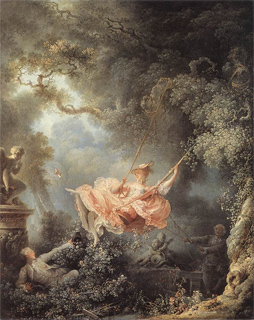The Wallace Collection first opened its doors to the general public in June 1900. To mark the centenary of one of Britain's most beautiful and unjustly (albeit rather pleasantly) underattended museums, this week's choice of picture is The Swing by Jean-Honore Fragonard. It is the museum's most famous painting and virtually its public emblem, which is entirely appropriate. It epitomises the carefree character of the Wallace Collection as a whole and perfectly represents the sensual and slightly risque tastes of the francophile English aristocrat who built it up in the first place.
The Fourth Marquess of Hertford acquired the world's most accomplished painting of a man looking up a girl's dress from the collection of the Duc de Morny in 1865, shortly after the Louvre had turned it down for fear that it might offend public morals. So it was that thanks to an outburst of nineteenth-century French prudery one of the most exuberant expressions of the spirit of eighteenth-century French libertinage came to end up in this country.
The fascinating circumstances behind its creation were recorded by the playwright, man of letters, Salon gossip and occasional light pornographer Charles Colle. Colle tells in his Memoires of a "most interesting encounter" with the painter Charles-Gabriel Doyen which took place on 2 October 1767. Doyen, whose ambitious new altarpiece for the Church of Saint Roch, Saint Genevieve Putting an End to Pestilence, was at the time the talk of Paris, had recently been approached by the Baron de Saint-Julien to paint a dirty picture. He had been invited to the petite maison on the edge of town where Saint-Julien had installed his mistress. Then the Baron had sprung his request on him: "I would like you to paint Madame on a swing, being pushed by a bishop. You will...


